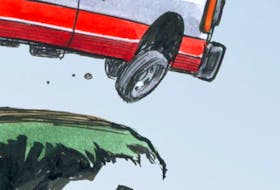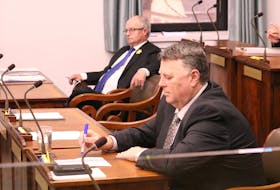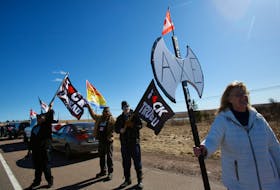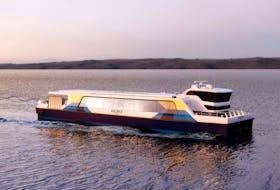The recent unveiling of the Kandahar battlefield memorial in secret, at a secure Department of National Defence site that is closed to the public, was neither aberration nor oversight, says the retired soldier who led the effort to collect mementos and historic material from the Afghanistan mission.
Rather, he said, much of the material has either been dispersed to units, is in storage or has vanished at least from his view, though he retired as a reservist, after a 26-year career in the regular force, only in 2014.
“Our whole ethos is we (the government) talk the talk, but really we don’t spend any money. It’s just lip service,” says former Warrant Officer Ed Storey, who was the war diarist for the Canadian Expeditionary Force Command headquarters.
He was the driving force behind Operation Keepsake, a three-person team that travelled first to Camp Mirage, Canada’s staging base for Aghanistan in the United Arab Emirates, and later to Kandahar Air Field, where the Kandahar memorial sprang up when Canada first began to suffer casualties in the war-torn country.
He later did the same sort of work at Ma’Sum Ghar, a now abandoned Canadian forward operating base in Kandahar.
The battlefield memorial at Ma’Sum Ghar consisted of a large Canadian flag and painted stones to commemorate those who had fallen there.
Because the stones couldn’t be brought back to Canada, they were instead formally buried in Afghan soil under the watchful eye of a pastor.
It was all “emotional and meaningful” work, Storey said in a phone interview from his Ottawa home.
But easily the most touching, he said, were the notes and cards, left by family members of some of Canada’s 158 soldiers who died in Afghanistan. Many of those families later took advantage of a government offer to fly to Kandahar and visit the memorial.
There were two large boxes of such notes and mementos, Storey said.
“It was so emotional we couldn’t catalogue it,” he said.
This material was brought back to Canada — part of what ended up being two or three sea containers — but Storey doesn’t know what happened to much of it.
He also served on what was known as the Afghan Legacy Project committee, a vast — and he says dysfunctional — group representing DND’s Directorate of History and Heritage, each of the three arms of the military, various deputy ministers and the National Capital Commission.
“Everyone wanted to see (the Kandahar memorial) come back,” Storey says, “but the committee never gelled.”
In the end, sometime in 2012, the committee recommended the memorial be located at Dow’s Lake in Ottawa, which, though it is home to HMCS naval reserve base, is more open and accessible than the secure new DND headquarters (Carling), where the memorial now sits in a purpose-built hall.
That the site is closed to the public, even to Afghan veterans and other soldiers, and that families of the fallen weren’t even invited to the opening prompted outrage when Postmedia’s David Pugliese revealed the news last week.
Storey, too, was furious.
“I think the concerns were money and security,” he told the Post. “I was telling them, the decisions we make now will impact on Canadians 50 years from now. We need it in a place where DND can have a parade, that is accessible to the public. Putting it on a military base or building is not the way to go.”
The memorial, he said, was built by soldiers and “isn’t pretty, but it sure meant something to the troops on the ground.”
Storey had questions about what happened to particular objects — the artist Silvia Pecota’s two bas-reliefs, one at Camp Mirage and one at Kandahar; two totem poles carved out of Afghan wood by a combat engineer, and Tim Horton’s paraphernalia.
Canadian Forces spokesman Daniel Le Bouthillier said the Kandahar bas-relief is part of the Kandahar memorial in Ottawa; the other one is part of the Camp Mirage collection at Trenton Air Force base, though its website doesn’t mention it.
One of the totem poles is in storage; a second is now on display at the Canadian Military Engineers Museum in Gagetown, N.B.
Le Bouthillier told the Post the majority of mementos were disseminated among the 71 different CF museums. The Directorate of History and Heritage has a collection of artifacts that will be used in a travelling museum exhibit next year.
"The potential was huge, and it was squandered away."
As for the Tim Horton’s sign, Le Bouthillier said, it too is in storage, but is allegedly going to be part of a “future permanent exhibit on Afghanistan.”
The coffee chain had an outpost at Kandahar Air Field — which at one point, as the home base of a huge international mission, was a city unto itself — along the so-called “boardwalk” of small stores.
Though soldiers usually preferred to be out beyond the wire, KAF was a welcome respite, a place where they could get a hot shower, call home and have a Tim’s. The little cramped outpost was enormously popular.
But Storey still worries — is the Kandahar stone the same as it was? Did the restorers do it right? He can’t go to the memorial to see for himself. “I’m retired,” he said. “Joe Q. Public,” and Joe Q. isn’t welcome.
“It’s easier to do nothing,” he said, “and seek forgiveness later. It’s so disheartening to see. The potential was huge, and it was squandered away.”
• Email: [email protected] | Twitter: blatchkiki
Copyright Postmedia Network Inc., 2019








